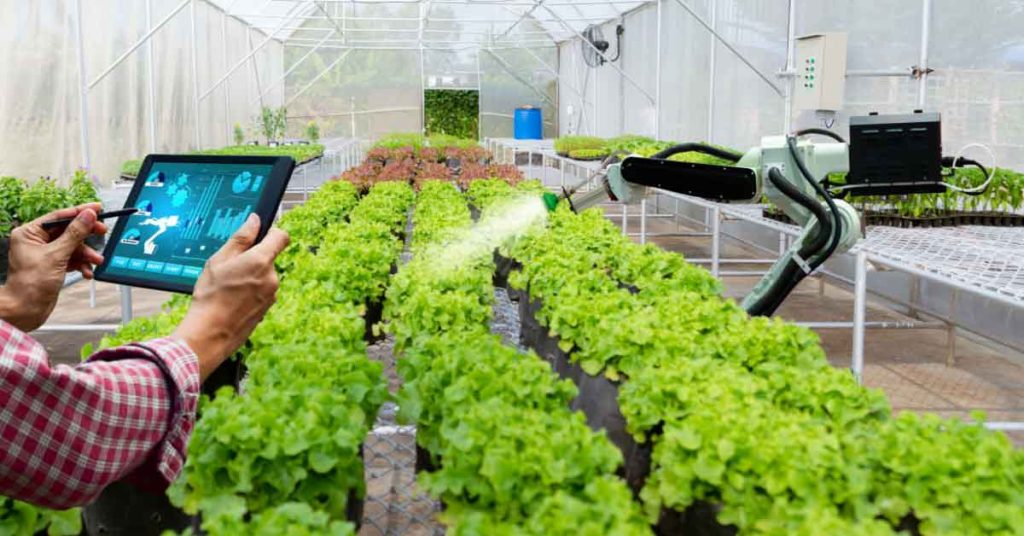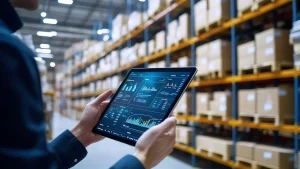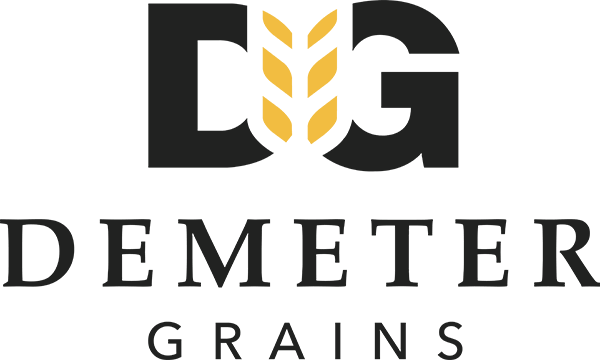Introduction
The agriculture supply chain is the base of the global food system, ensuring that goods are transported smoothly from farmers to customers. Given the growing need for sustainability, efficiency, and transparency, the importance of efficient supply chain management in agriculture cannot be minimized. To overcome obstacles and satisfy customer expectations, businesses and customers in this sector use contemporary technology and methods.
This blog explores the subtleties of agriculture supply networks, emphasizing important elements, problems, and solutions, as well as the role of agribusiness supply chain companies in bringing change.
What is an agriculture supply chain?
An agriculture supply chain is where farmers, agribusinesses, logistics companies, wholesalers, and retailers are among the key stakeholders in the agricultural supply chain. It includes all agricultural product production, processing, distribution, and consumption activities. The chain begins at the farm, where raw materials are grown and continues through processing facilities, distributors, retailers, and consumers. An effective agriculture supply chain guarantees that perishable goods like fruits, vegetables, dairy, and meat will reach customers in the best possible condition.
This chain also reduces waste and maximizes value for all stakeholders. However, any kind of inefficiency has the potential to cause significant financial and environmental damage.
Agriculture supply chain process overview
The agriculture supply chain involves interconnected steps to transport agricultural products efficiently from the farm to consumers. The process begins with procuring inputs like seeds, fertilizers, and tools. Farmers then use these inputs to cultivate crops or raise livestock during production.
After harvesting, the raw products move into the processing and value-addition stage, where they are cleaned, graded, and transformed into consumable forms. The next phase is packaging and storage, where products are prepared for transportation while maintaining quality and freshness.
Once packaged, the goods enter the distribution phase, where logistics companies transport them to markets, retailers, or consumers. Technology-driven tools like GPS tracking, inventory management systems, and digital marketplaces streamline this phase by ensuring efficient and transparent movement of goods.
Effective supply chain management ensures minimal waste, reduced costs, and timely delivery throughout the process while enhancing product quality and accessibility.
Relevance of supply chain management in agriculture
Supply chain management in agriculture involves coordinating and optimizing all activities across the chain to ensure efficiency, cost-effectiveness, and sustainability. Proper management allows stakeholders to:
Reduce post-harvest losses: Effective handling, storage, and transportation minimize spoilage and waste.
Enhance market access: Simplified procedures allow farmers to access bigger markets, boosting their profitability.
Improve transparency: Blockchain technology offers an understanding of product origins and handling procedures, building consumer confidence.
Optimize resource utilization: Stakeholders can reduce expenses and lessen their environmental impact by better managing inputs like seeds, fertilizer, and water.
Components of the agriculture supply chain
An effective agriculture supply chain comprises several interconnected components:
Production: This includes all farm operations, including planting, growing, and harvesting.
Processing: To make sure they satisfy quality and safety requirements, raw agricultural products are converted into consumable products.
Storage: Especially for perishable goods, proper storage facilities keep products fresh and stop spoiling.
Transportation: Effective logistics ensures timely transportation to processing facilities, merchants, or customers.
Distribution: Managing the movement of goods from warehouses to shops or customers is known as distribution.
Retail and consumption: Agricultural goods are bought and consumed by customers at this last step.
Benefits of effective agriculture supply chain management
There are many advantages to using best practices and technology in the agriculture supply chain:
Reduced costs: More efficiency reduces waste and operating expenses
Increased productivity: Streamlined processes increase output and profitability
Enhanced quality: Proper handling and storage preserve product quality
Sustainability: Resource optimization and waste reduction support environmental sustainability
Consumer trust: Open and honest practices build consumer confidence.
Agriculture supply chain in India
India’s agriculture supply chain is vital to its economy, contributing significantly to GDP and employing a large population segment. However, it faces unique challenges, such as fragmented landholdings, inadequate infrastructure, and the involvement of multiple intermediaries.
Recent government initiatives and technological advancements are addressing these issues. Programs like e-NAM (National Agriculture Market) aim to create a unified digital marketplace for farmers, while agribusiness supply chain companies are introducing modern tools to streamline operations.
What are the four parts of the agricultural supply chain?
The agricultural supply chain comprises four key components that work in unison to ensure the seamless flow of agricultural goods from farm to end consumer. These parts include:
Input supply
This stage provides essential resources like seeds, fertilizers, pesticides, machinery, and other agricultural inputs required to begin the cultivation process. Input suppliers are the chain’s backbone, ensuring farmers can access quality products.
Production
At this stage, farmers or producers grow crops and raise livestock. This step involves soil preparation, planting, irrigation, pest management, and harvesting. Efficient production relies heavily on precision agriculture techniques, resource optimization, and modern farming methods.
Processing and packaging
Once the agricultural products are harvested, they are processed and packaged for distribution. This may involve cleaning, grading, processing raw materials, and packaging them to meet market standards. Value addition at this stage significantly enhances the product’s appeal and profitability.
Distribution and marketing
The final stage involves transporting the packaged products to wholesalers, retailers, or directly to consumers. Logistics, inventory management, and effective marketing are critical in ensuring the products reach their destination on time and in good condition.
Top 14 agriculture supply chain companies reigning the industry
AgriChain
AgriChain has changed the face of the agriculture supply chain by providing excellent solutions to users which others commonly lack. Its user-friendly interface creates a communication bubble between farmers, transportation providers, and distributors involved in the supply market.
AgriChain allows users to enjoy the benefits of real-time data transfer, which ensures that all the participants included in the process are updated. This transparency creates space for trust, efficiency, and error-free procedures.
With the help of automated delivery procedures, AgriChain reduces the workload of moving goods from farms to end users. The real-time tracking procedures and time-analyzed records reduce the delays.
Agrichain allows users to view the supply chain in detail. This enables stakeholders to track inventory, supervise shipments, and manage stocks efficiently, helping users reduce risks and improve planning.
AgriChain improves supply chain efficiency and reduces waste. It promotes sustainable agriculture practices. Its scalable solutions and techniques benefit businesses of all sizes, from small farms to large corporations.
AgJunction
AgJunction offers precision agriculture solutions that enhance the sustainability of farming practices. AgJunction contributes to resource efficiency by providing farmers with technology for precise navigation and automated machinery control.
Trimble Agriculture
Trimble Agriculture provides comprehensive solutions connecting every aspect of the supply chain. Trimble Agriculture enhances visibility and collaboration, streamlining the flow of products and information throughout the supply chain by leveraging data analytics.
Bunge Limited
Bunge Limited operates across the entire value chain and contributes to optimizing processes and ensuring a reliable supply chain for agricultural products.
Agrible
Agrible focuses on precision agriculture by using advanced technology to provide farmers with the latest information and support them in wise decisions about planting, harvesting, and logistics.
John Deere
John Deere develops smart farming equipment and precision agriculture solutions and enables farmers to increase productivity while decreasing resource usage.
AGCO Corporation
By incorporating smart technologies into its products, AGCO Corporation enhances the efficiency of farming operations and positively impacts the agriculture supply chain by improving the speed and accuracy of processes from planting to harvesting.
Syngenta
Syngenta contributes to increasing agricultural productivity while minimizing environmental impact by developing innovative crop protection and seed technologies. The company’s commitment to sustainability is reshaping practices within the supply chain for a more responsible and eco-friendly future.
Farmobile
Farmobile collects and analyzes real-time data from farm equipment and allows farmers to make informed crop management and logistics decisions – thus making the agriculture supply chain more adaptive and responsive.
DuPont Pioneer
DuPont Pioneer positively influences the agriculture supply chain by ensuring a consistent and high-quality supply of agricultural products.
Cargill
Cargill is committed to sustainability and innovation. It connects small-end farmers to consumers through its global chain, resulting in a seamless flow of products.
Indigo Agriculture
Indigo Agriculture uses microbes to improve crop production and enhances plant health and resilience. This innovative approach increases yields and contributes to the sustainability of agriculture.
Monsanto
Monsanto uses biotechnology to address challenges in agriculture. Its innovations have profoundly impacted the agriculture supply chain by providing farmers with tools to overcome various challenges.
Raven Industries
Raven Industries focuses on developing smart solutions for precision agriculture. It enables farmers to optimize their operations by combining technology and connectivity, thus ensuring a smoother flow of products from farms to consumers.
Conclusion
The agriculture supply chain is undergoing a significant transformation, driven by the need for efficiency, transparency, and sustainability. Supply chain management in agriculture, supported by innovative technologies and dedicated companies, holds the key to overcoming long-standing challenges and meeting the demands of a growing population. As stakeholders continue to adopt modern practices and collaborate effectively, the future of the agribusiness supply chain looks promising, ensuring a more resilient and equitable food system.
FAQs on Agriculture Supply Chain
What is the agri-food supply chain?
The agri-food supply chain refers to the interconnected processes and stakeholders involved in producing, processing, distributing, and consuming food products. It begins with input suppliers providing farmers with resources like seeds, fertilizers, and equipment. After cultivation, the harvested products move through processing, packaging, storage, and logistics before reaching wholesalers, retailers, or consumers. Efficient agri-food supply chains are essential for ensuring food security, reducing waste, and maintaining affordability while meeting consumer demands for quality and safety.
What is an agricultural chain?
An agricultural chain is a network of activities and entities involved in the journey of agricultural products from farms to end consumers. This chain includes farmers, input suppliers, processors, transporters, distributors, and retailers. Each link in the chain plays a crucial role in ensuring the timely delivery of high-quality agricultural goods. Effective management of the agricultural chain enhances productivity, minimizes costs, and reduces inefficiencies, benefiting both producers and consumers.
What is meant by supply chain?
A supply chain refers to processes, organizations, people, activities, and resources that produce and deliver goods or services. It encompasses everything from sourcing raw materials to manufacturing, transportation, and distribution to the end consumer. In agriculture, the supply chain includes stages like input supply, farming, processing, storage, and distribution. Effective supply chain management ensures the smooth flow of goods, reduces waste, and improves profitability.
What are the strategies of agricultural supply chain management?
Effective agricultural supply chain management relies on technology integration, collaborative planning, and demand forecasting. IoT, blockchain, and GPS improve tracking, transparency, and decision-making. Collaborative planning among farmers, suppliers, and distributors ensures smoother coordination and reduced inefficiencies. Demand forecasting using analytics helps optimize production, inventory, and market supply. Developing cold chain infrastructure is critical to reducing post-harvest losses, while sustainable practices like eco-friendly farming ensure long-term efficiency. Training and capacity-building for farmers and supply chain stakeholders also significantly enhance productivity and performance.
What are the challenges of supply chain management in agriculture?
The agricultural supply chain is hindered by several challenges, including fragmentation due to numerous small-scale farmers, which results in inefficiencies and coordination issues. Post-harvest losses, caused by inadequate storage and cold chain facilities, lead to significant food wastage—poor transportation infrastructure and connectivity delay product movement, affecting quality. Farmers also face market volatility, with unpredictable demand and pricing creating uncertainties. Limited access to modern technologies reduces productivity, particularly for small farmers, while complex regulatory frameworks discourage private investment and innovation, further complicating supply chain management.
What are the six parts of the agri-food supply chain?
The agri-food supply chain includes:
- Input supply – Seeds, fertilizers, and machinery.
- Production – Farming activities like planting and harvesting.
- Processing & packaging – Converts raw produce into market-ready products.
- Storage – Preserves quality and prevents spoilage.
- Distribution & logistics – Transports goods to markets.
- Retail & consumption – Final sale to consumers.












